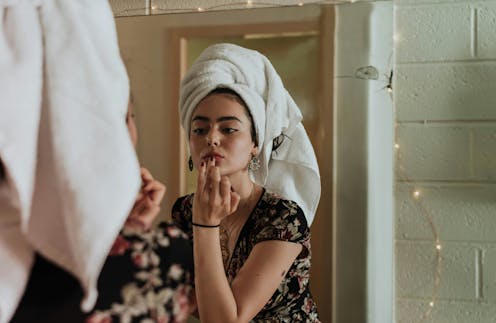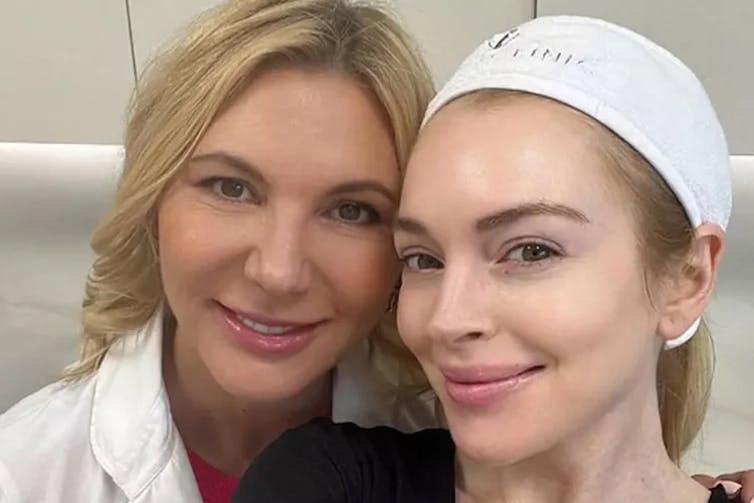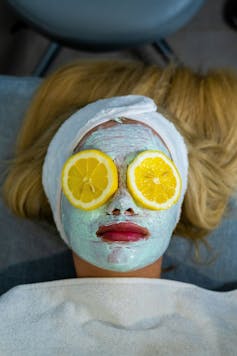
The internet is abuzz with talk of beauty and the lengths we’ll go to achieve it. From Lindsay Lohan’s recent transformation to Donatella Versace’s “new look”, those of us plugged in online can’t help but gab over the rise of better, less detectable and more precise plastic surgery.
Achieved through a combination of invasive operations like face lifts and rhinoplasty as well as non-invasive procedures — like the injection of facial filler and facial neurotoxins like Botox — the contemporary beauty standard is increasingly intensive, costly and challenging to maintain. A hundred units of Botox, or its counterpart Dysport, could run clients up to $1,500 with effects diminishing in just four to six weeks.
Although women continue to make up the majority of clients seeking invasive and non-invasive beauty interventions, the number of men undergoing plastic surgery is on the rise. So too are the number of advertisements and beauty-focused messages targeting men.
But while appearance pressures and beauty advertising are increasingly directed at men, the imperative to be beautiful has come at significant emotional and financial costs for women — and young women especially.
Immersed in a celebrity-saturated and visually intensive media culture, young women today face pressures to purchase beauty products and services to manage or, better yet, perfect their appearance ad nauseam.

Social media pressures
I study beauty and its cultural forces, especially as they apply to young people online. My findings speak to the increasingly important role that beauty plays in shaping women’s opportunities for visibility in both online media and in the real world. Young women are engaging in increasingly intensive practices as they aspire to new beauty standards.
I recently published an investigation with Josée Johnston, a sociologist at the University of Toronto, into the ways young people grapple with contemporary beauty standards. We looked at how their practices and purchases are compelled by current beauty standards.
For many young women, the pressure to be — or become — beautiful is top of mind. And yet the beauty standard remains elusive and painfully out of reach for most of the women and girls we spoke with. Few can afford to keep up with costly and intensive interventions to the face and body.
Relax, sculpt, lift: High-definition make-up
About 20 years ago, a needle or surgical knife to the face was considered a rather extreme intervention in pursuit of beauty. These procedures were often risky, permanent and sometimes poorly done. Today, neither knife nor needle are very unusual for those seeking a more perfect face and body.
Indeed, the injection of facial neurotoxins is among the fastest growing cosmetic procedure in Canada and the United States. The Academy of Plastic Surgeons suggests that nearly 4,715,716 procedures involving Botox were performed in 2023 alone. These numbers signal a wider shift in the production and maintenance of contemporary appearance standards, and the lengths we go to achieve them.
Alongside these figures, an ever-greater number of bodily and facial features are scrutinized. And products and services are designed to offer “high-definition” beauty in bottles, from head and toe.
Driven partly by our increasing preoccupation with celebrity images popularized by social media platforms, even everyday cosmetics like skin creams, bronzers and lip glosses are being marketed with promises to “relax,” “sculpt” or “lift” facial features. These purchases from the beauty counter are being marketed to consumers as if they can achieve a surgical degree of perfection.
Read more: Praise for Kim Kardashian's Skims ignores her family's relationship with body augmentation
Priced out, excluded or in debt

Many young women we spoke with described invasive facial and bodily interventions as a central component of the contemporary beauty standard. They described these interventions as compulsory, leaving many women either priced out of the beauty market or in pursuit of beauty at great personal expense.
Celebrity women can afford to purchase facial fillers and Botox to augment their appearance, such as relaxing fine lines and plumping their features. But the young women we spoke with said interventions such as these are “unattainable” for the average person, and unsustainable in the long term.
Signs of resistance
Many women we spoke with insist on the importance of appearance, especially as it relates to the likelihood of their success, and the success of other women. Few of these women made the same associations with men. In fact, many “successful” men were described by our interviewees as “plain,” “unremarkable” or “ordinary.”
The pressure to beautify through intensive and costly procedures is part and parcel of a broader cultural and economic environment centred on appearance. One that, as University of London sociologist Rosalind Gill puts it, measures a woman’s success in terms of her looks.
However, there are small and important signs of resistance. Young women do not approach beauty and its pressures uncritically. In fact, quite the opposite is true. Many of the young women we spoke with search for spaces to resist and challenge beauty messaging as well as the cultural imperative toward facial and bodily perfection. These spaces, though few and far between, make resistance challenging but not impossible.
Jordan Foster does not work for, consult, own shares in or receive funding from any company or organisation that would benefit from this article, and has disclosed no relevant affiliations beyond their academic appointment.
This article was originally published on The Conversation. Read the original article.







